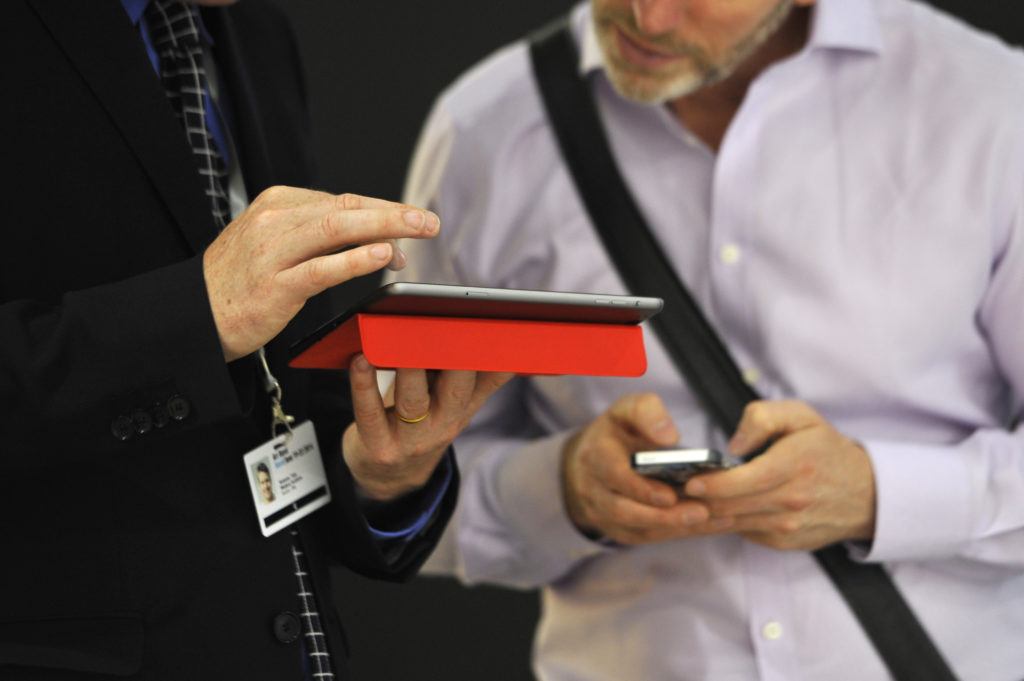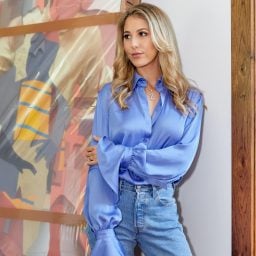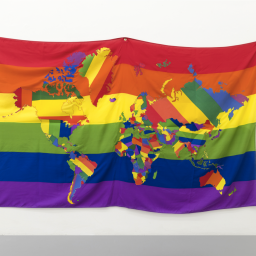In a normal year, any elite contemporary art gallery would start planning a booth for Art Basel’s June edition in Switzerland well in advance. At no other fair is it so pivotal to a gallery’s lifeblood to place high-priced objects in the hands of wealthy collectors; on no other stage is the non-stop pressure of one-upping the competition more palpable. And the application process is such that even decades-long veterans have to submit an application that amounts to a fully fleshed-out booth plan nearly nine months ahead of the VIP opening.
“Basel Basel is the most important fair, more important than all the other fairs combined,” said Marc Payot, partner at Hauser & Wirth. “We actually begin discussing and conceptualizing our next Art Basel booth in the week after the fair closes every year.”
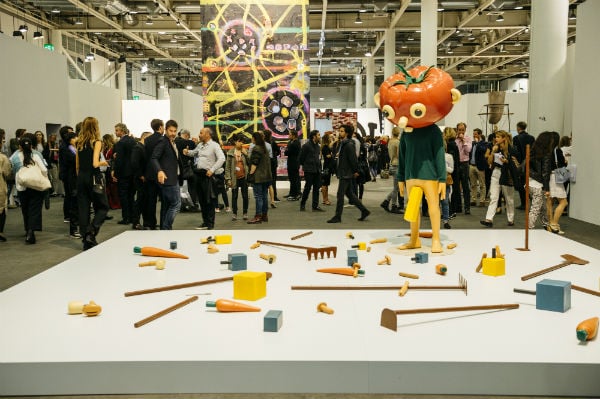
Flashback to 2016: Hauser & Wirth’s presentation of Paul McCarthy’s Tomato Head (Green) (1994) in the Unlimited section of Art Basel. Image: Courtesy Hauser & Wirth.
Basel regulars had been planning for the fair at least nine months in advance with the typical set-up in mind: the same collectors would stop at the same spots as in years past, and each booth would have the same square footage. Even the slightest adjustment to these schematics—a booth placed in a slightly new location, say—has been enough, in past years, to send gallery owners beelining to fair organizers to complain.
But dealers aren’t complaining about a shift to a new location within the fair. They are facing the elimination of location. A number of dealers whom I spoke to indicated that, as the biggest art fair in the world became the biggest online art fair in the world, months-long-held plans went up in smoke in seconds.
And so galleries had to do a top-down rebuild to refashion booths that would look good online, and sell remotely.
For the mega-galleries, the pivot was less about switching up the playbook than digging into deep inventory to offer whatever was available. Gagosian stuffed its Basel booth with 15 works, including a new painting by Mark Tansey and Jeff Koons’s wall work Balloon Monkey Wall Relief (Blue) (2011)—and then also launched its own online viewing room that went live 48 hours before the fair did, offering new works by Nathaniel Mary Quinn and Mary Weatherford (which sold within hours) and a $950,000 Joe Bradley painting from 2015 still available Tuesday morning.
Levy Gorvy had a similarly expansive revamp of its Basel plans: a new booth that “celebrates art’s ability to be a source of solace and optimism even in difficult times.” Jack Shainman’s booth also follows a very relevant theme. Entitled “Reach Out and Touch Me,” the gallery wanted to “explore the power of touch and intimacy during a time when we’ve retreated from the public.”
Some galleries with multiple locations have combined their online viewing rooms with a real-life physical space, one that only select locals can check out in tandem with the more egalitarian cyberspace experience.
Galerie Thaddeaus Ropac has in its viewing room works by Roy Lichtenstein, Georg Baselitz, and Sigmar Polke, and many of the works from the booth—along with a large new painting by Anself Kiefer, Memento Mori (2020)— will also be present in the London gallery, which opened to the public June 16 for the first time in months. In August, Pace will show much of the work in its digital Basel booth in the very real-life space it’s opening in East Hampton in July.
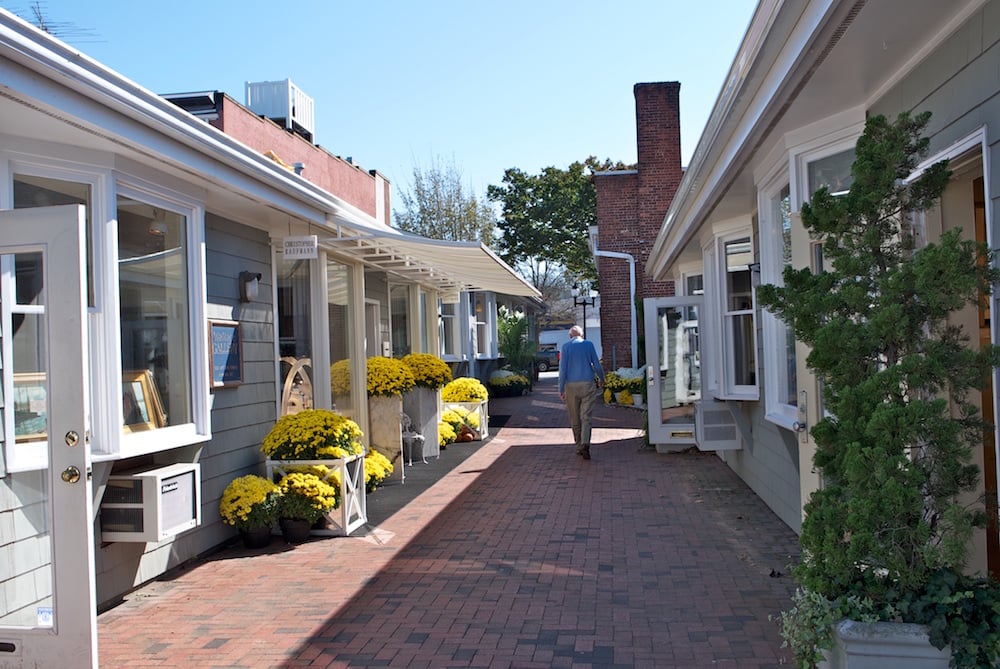
Pace Gallery’s new space in East Hampton. Photo by Sylvia Muller. Image courtesy the Mill House Inn
Kasmin made a more subtle, if still significant, adjustment. The gallery applied to the fair with the idea of presenting a survey focusing on Lee Krasner’s early charcoal works. “It’s a body of work that was unrecognized—before that it was pretty unheralded,” said Eric Gleason, a director at Kasmin and one of the senior staffers who’s stepped up to run the gallery since its namesake, Paul Kasmin, passed away in March.
When it was clear that the Art Basel would become digital, Gleason said they went to the fair brass to ask if they could expand their purview to three artists: Krasner, Max Ernst, and Ali Banisadr, focusing on the process of mark-making in each of the artists’s works. After getting a yes, Kasmin’s team hustled to build out a more ambitious booth, working at a tenacious clip.
“This came together quickly, quicker than it would under normal circumstances, probably in a month,” Gleason said.
The thinking behind expanding the offerings rather than downsizing for the small screen had to do with perusing habits in viewing rooms. Gleason said he hopes collectors on their laptops and iPads will take more time with the work than those darting through the Messeplatz.
“We have the ability to have multiple images and detail shots,” he said. “When people are visiting the online platform, they aren’t walking through for 45 seconds. You’re going to have their attention for so much longer.”
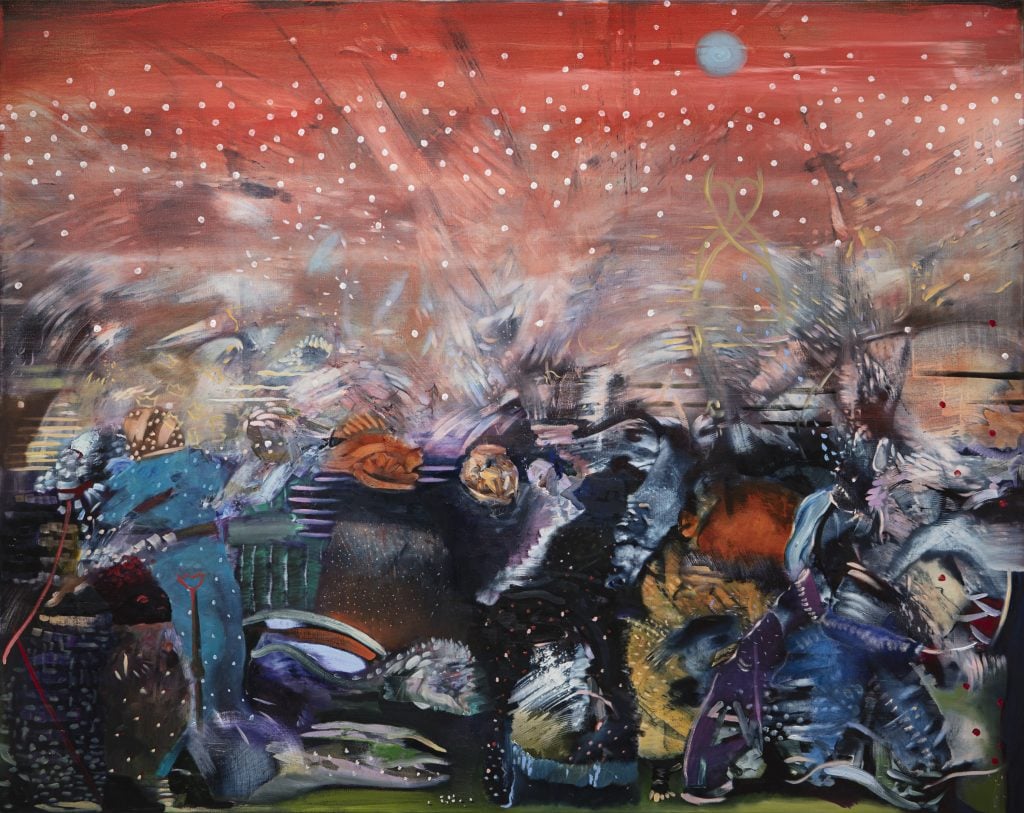
Ali Banisadr, Red (2020). Courtesy of the artist and Kasmin Gallery
Gleason also said that, unlike some other online fairs over the past month, there’s substantial buzz over the caliber of products being presented. Payot agreed.
“The expectations are of course higher in comparison with other fairs,” Payot said. “But the works we bring to this fair are outstanding. So I expect that we’ll do very well.”
Despite the fact that the gallery had been working on the real-life booth since right after Basel Basel 2019, they were able to pivot to the digital realm relatively quick. It helped that they had a contingency plan being developed “just in case” the fair would indeed be cancelled.
The approach was to find the online equivalent of “wall power”—that X factor that makes certain works pop on a screen.
“We’ve prioritized two key considerations: what will ‘read’ best in a digital sphere, and which works of art speak to this moment with the greatest power,” Payot said.
This means that new works by Pipilotti Rist, Avery Singer, Lorna Simpson, Simone Leigh, and Nicolas Party—some of which might have been held back if there were a fair in September—will all be available this week.
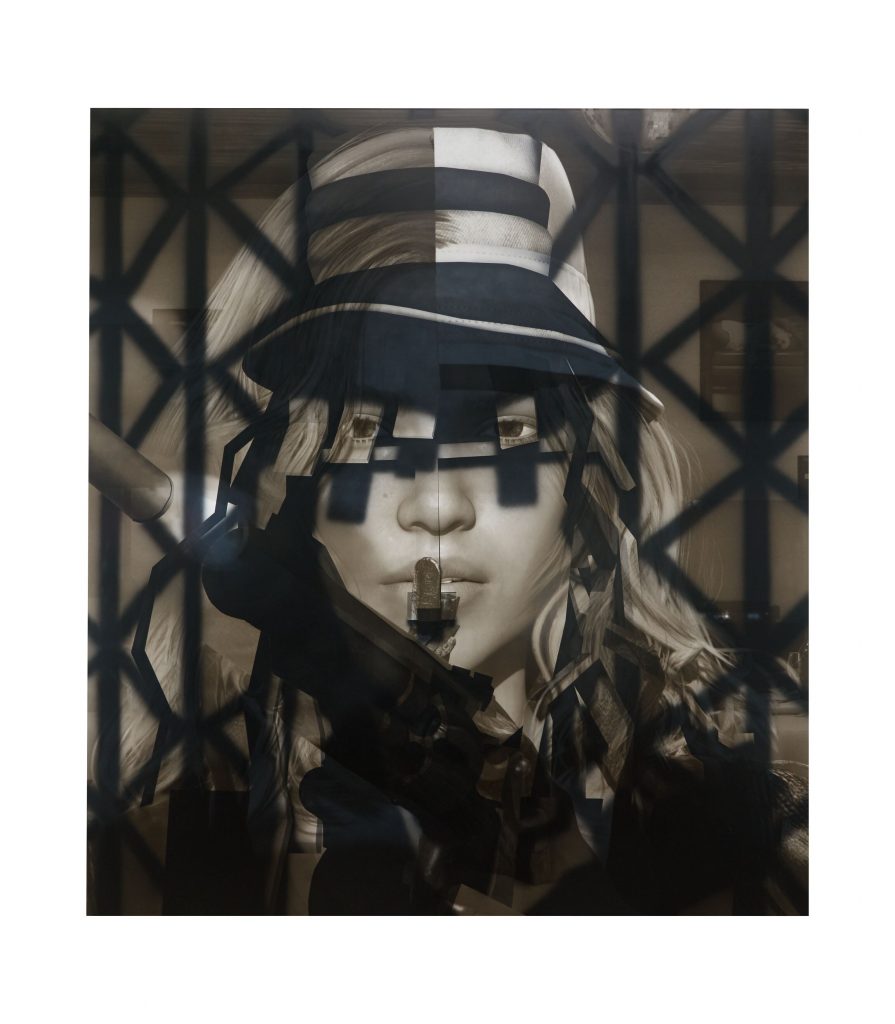
Avery Singer, Assassin (Bird bar) (2020). © Avery Singer. Courtesy the artist and Hauser & Wirth. Photo:KATE ENMAN / KATE SHOT ME.
The gallery has also built out a robust trove of media offerings, including an oral history of the fair that’s quite delightful for insiders. (In it, Thomas Huhn, head barkeep at Les Trois Rois shares his memories of setting up the Roth bar his hotel’s lobby, while art advisor Patricia Marshall waxes eloquent on the fair’s famous sausages: “These are people who dine at the best restaurants in the world and some even have their own chefs and yet they are crazy for these Basel sausages.”)
Perhaps most memorably, Sean Kelly Gallery is putting in its online booth a work that certainly couldn’t have fit in the physical booth on the Messeplatz: Kehinde Wiley’s Rumors of War (2019), which is more than 27 feet high and more than 25 feet long.
The work was first unveiled in Times Square last September, and was then bought by the Virginia Museum of Fine Art in Richmond, where the Confederate monuments that Rumors of War alludes to have been defaced by protestors in recent days. The work could not be more viscerally relevant.
“It made its debut last December, and its prescience is extraordinary,” Kelly told me on the phone Monday, calling from his house in the Hudson Valley. “It really did come about with Kehinde going down to Richmond, and being so appalled that there are these Confederate statues. It was Kehinde’s response to those monuments. Now, Richmond became a focal point, and now the mayor and the governor are saying these sculptures will go down. It has become an icon of the moment.”
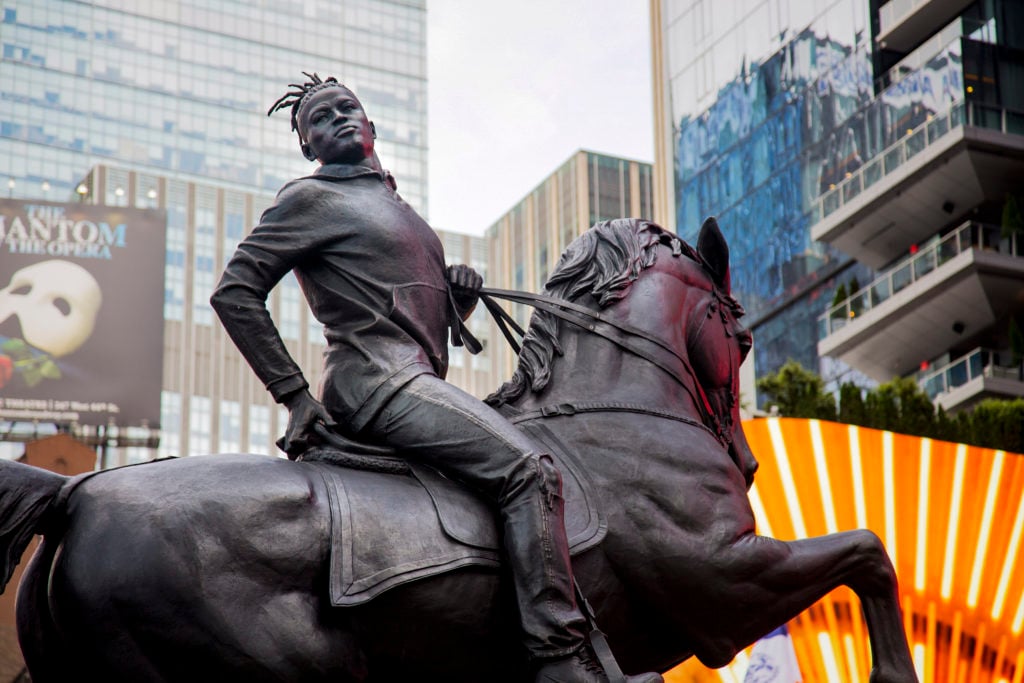
Kehinde Wiley, Rumors of War (2019). © 2019 Kehinde Wiley. Courtesy of the Virginia Museum of Fine Arts, Times Square Arts, and Sean Kelly. Photo: Ka-Man Tse for Times Square Arts.
Initially, the plan was to include a smaller version of the work, but once the fair went digital, there was no reason to hold back the gargantuan actual sculpture.
“We were talking about the booth, and one of my colleagues said, ‘Why are we putting the smaller version in this is a virtual exhibition—why not put the real thing in?”
Though the VMFA bought the first edition, editions two and three will be available in the virtual booth, priced at $3.5 million each. The artist is keeping at least one if not both of the artist’s proofs, Kelly said, and explained the price by noting that fabrication costs are nearly a third of that price.
“We couldn’t physically get it into the fair, as it would be too heavy too expensive,” Kelly said. “There have to be some silver linings to virtual art fairs, and this is one of them.”
